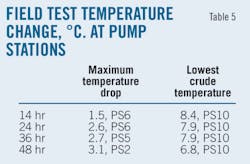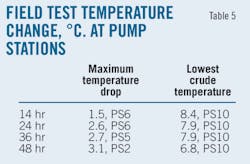BP's bill for oil spill response tops $3 billion
BP PLC, operator of the runaway Macondo well in the Gulf of Mexico, has spent $3.12 billion on oil spill response efforts since an Apr. 20 blowout, the company said July 6.
It's impossible to estimate total response costs yet, BP said. Transocean Ltd.'s Deepwater Horizon semisubmersible drilled the Macondo well for BP and its partners in 5,000 ft of water on Mississippi Canyon Block 252. An explosion and fire on the semi killed 11 people, and the rig sank on Apr. 22. Cause of the blowout accident remained under investigation.
BP continued drilling two relief wells while expanding collection systems to divert more leaking oil and natural gas from spilling into the gulf.
The first relief well was days ahead of schedule in early July, but spill response officials still anticipated an August completion date.
The relief well, being drilled by the Development Driller III, reached a measured depth of 17,725 ft on July 4, and drillers completed a sixth ranging run in a series of ranging runs to precisely position the relief well in relation to the blowout well.
A second relief well, being drilled by the Development Driller II, had reached a measured depth of 13,871 ft.
National Incident Commander and retired Coast Guard Adm. Thad Allen met with BP executives in west Houston on July 6 to discuss the relief wells and also the timing and logistics of possibly replacing the lower marine riser package (LMRP) containment cap with a more permanent sealing cap.
Allen said the relief well had entered the slowest part of the drilling process in which crews use ranging runs to precisely position it in line with the blowout well.
They have about 264 ft left to go before they can get to a point where they can potentially intercept the [Macondo] well," Allen said of the first relief well.
Collection efforts grow
On July 3, two existing collection systems gathered a total of 25,198 bbl of oil and 57 MMcf of gas of which all the gas was flared and some oil was burned. An LMRP containment cap system connected to the Discoverer Enterprise drillship collected 17,022 bbl of oil while the Helix Q4000 multiservice vessel flared 8,176 bbl.
Choppy seas in early July slowed installation of a third collection system involving the first of two floating risers. On July 6, the first floating riser was partially connected with the Helix Producer floating production unit.
Weather and rough seas delayed completion of that installation. Spill response crews were closely watching the weather, he said.
Once installed, the Producer can ride out 12-ft waves without having to decouple from the collection system. Crews awaited calm seas to finish installation work that will bring total collection capacity to 53,000 b/d, Allen said.
The floating riser is designed to allow more rapid disconnection and reconnection of the system, reducing the time that collection might be disrupted in case of hurricanes or other problems.
Some 44,500 people, about 6,560 vessels, and more than 110 aircraft were engaged in response efforts in early July. Weather associated with Hurricane Alex disrupted skimming operations for 3 days. Some skimming operations resumed while response crews monitored tropical weather developments.
A supertanker converted into a skimmer, named A Whale, operated a trial run north of the Macondo well. TMT Shipping Offshore owns the ship and hopes to sign a cleanup contract for the vessel, which can remove as much as 500,000 b/d of oil and water mix from the sea's surface.
Spill reaches Texas
Oil from the spill has reached all five Gulf Coast states. Scientists said lab tests confirmed that tar balls recovered from Texas along Galveston beaches and Bolivar Peninsula contain crude from the Macondo spill. Previously, spilled oil reached Louisiana, Mississippi, Alabama, and Florida.
Officials said it remains unclear how the material got to Texas. Investigators discovered very small tar balls in the surf, but not on shore, on July 3. The tar balls were collected and sent to a laboratory for study.
Test results showed the oil was lightly weathered, raising doubts that the oil traversed the gulf from the spill source. It's possible the tar balls came from boats carrying oil collected during the response to Texas for processing, officials said.
Workers from the US Coast Guard, Texas General Land Office, and the city of Galveston patrolled the beaches by helicopter and on foot. On July 4, teams discovered some dime-sized to nickel-sized tar balls on both Bolivar Peninsula's Crystal Beach and Galveston's East Beach.
USCG hired a contractor to remove the tar balls. A total of 35 gal of sand-seaweed-tar was recovered in Crystal Beach on the Bolivar Peninsula and on East Beach in Galveston on July 5-6. Crews estimate 35 gal was recovered, of which about 7 gal was tar balls with the largest being the size of a ping-pong ball.
More Oil & Gas Journal Current Issue Articles
More Oil & Gas Journal Archives Issue Articles
View Oil and Gas Articles on PennEnergy.com

